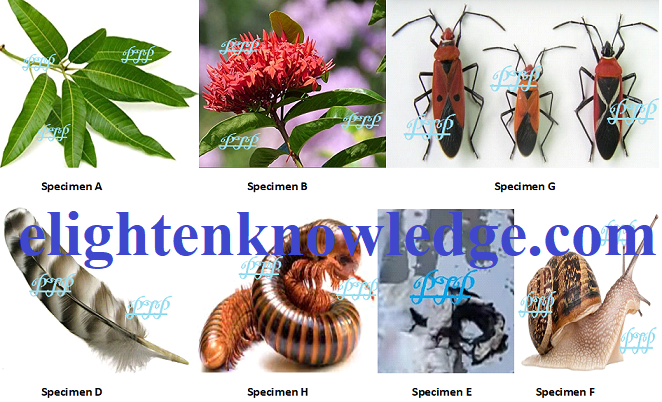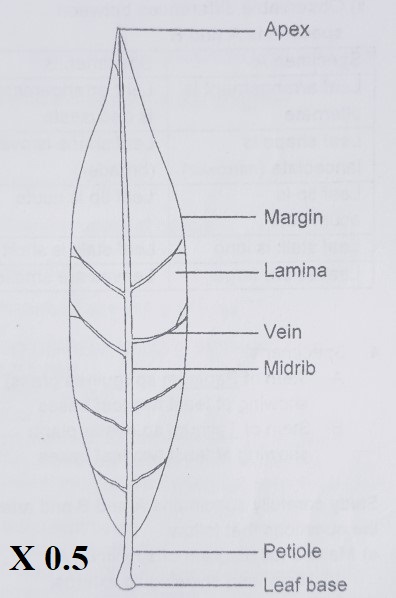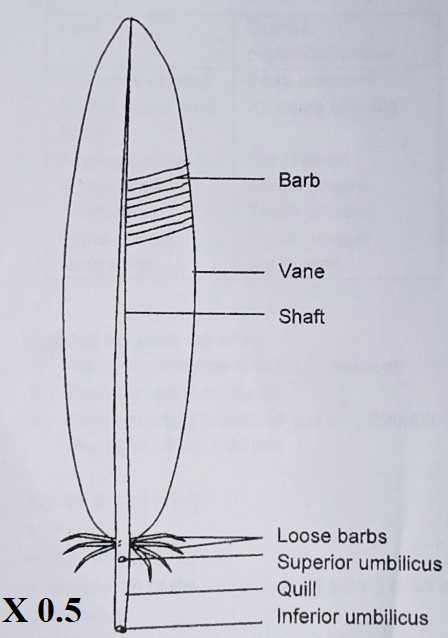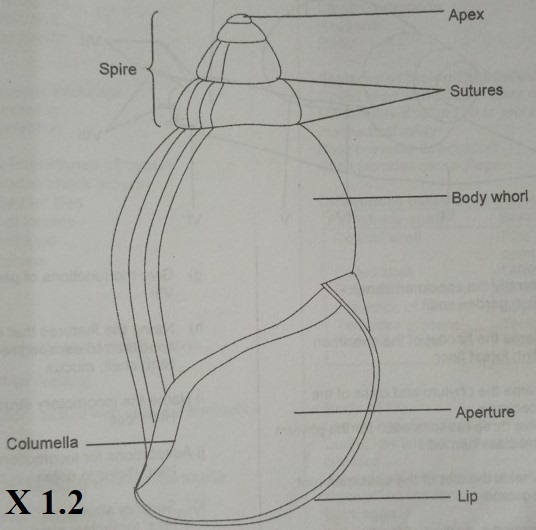Biology Practical Questions and Answers (Section 1).

Biology Practical Questions and Answers (Section 1).
Question 1
-
Specimen A – Twig of mango plant
-
Specimen B – Twig of Ixora plant
Study specimens A and B carefully and use them to answer the following questions
Classify specimen B into its Division and Class
Answer:
- Division Angiospermophyta
- Class Dicotyledoneae.
State the types of leaf arrangement in specimens A and B
Answer:
- Specimen A: leaf arrangement is alternate.
- Specimen B: leaf arrangement is opposite.
Name the leaf shape of specimens A and B
Answer:
- Specimen A: leaf shape is Lanceolate/sword-like
- Specimen B: leaf shape is Ovate
State the type of leaf margin in specimen A
Answer:
- Specimen A has an entire or wavy margin.
State the types of venations found in the leaves of specimens A and B
Answer:
- Specimen A has net venation
- Specimen B has net venation
List two observable similarities found in specimens A and B
Observable similarities between specimens A and B
- Both have net venation
- Presence of leave stalk
- Both have a smooth margin
- Leaves have pointed apex
- Both have prominent midribs
- Both specimens are green (presence of chlorophyll)
In tabular form, state three observable differences between specimens A and B
Observable differences between specimens A and B.
|
Specimen A |
Specimen B |
| Swordlike or lanceolate leaf shape. | Ovate leaf shape. |
| The leaf is relatively narrow. | The leaf is relatively broad. |
| Have long leaf stalk. | Have relatively short leave stalk. |
| The leaf is larger in size. | The leaf is smaller in size. |
| Leaf arrangement is alternate. | Leave arrangement is opposite. |
| The leaves have acuminate tips. | Leaves have acute tips. |
Make a drawing 8cm – 10cm long of the leaf of specimen A and label fully
A label drawing of the leaf of specimen A

Question 2
- Specimen C – Scale of bony fish
- Specimen D – Quill feather
- Specimen E – Freshly prepared goat/sheep skin
Study specimens C, D, and E carefully and use them to answer the questions below.
Name the Class of organisms to which specimens C, D, and E belongs. Give one reason for each.
Answer:
- Specimen C: Class Osteichthyes.
- Specimen D: Class Aves.
- Specimen E: Class Mammalia.
State one function common to the specimens C, D, and E.
Answer:
Protection of the organism against mechanical injury and desiccation.
In tabular form, state two observable differences between specimens D and E.
Observable differences between specimens D and E
|
Specimen D |
Specimen E |
| Presence of shaft or rachis. | Absence of shaft or rachis |
| Presence of quill. | Absence of quill |
| Barbs present. | Barbs absent. |
| It is long and hard. | It is broad and soft. |
| Presence of superior umbilicus. | Absence of superior umbilicus. |
| Presence of inferior umbilicus. | Absence of inferior umbilicus. |
Explain two features of biological importance in specimen D.
Answer:
Features of biological importance in specimen D
- The overlapping arrangements of specimen D over the body of birds allows smooth movement and little resistance in flight.
- Coloration of specimen D enhances courtship display and camouflage.
- Shaft/rachis is centrally placed to provide a point of attachment for barbs and provide strength to the specimen.
- Presence of specimen D serves as waterproof, keeps the organism warm, provides insulation, and protects the organism.
Make a drawing 8cm – 10cm long of specimen D and label fully
A label drawing of specimen D

Question 3.
- Specimen F: Garden snail
- Specimen G: Cotton Stainer
- Specimen H: Millipede
Study specimens F, G, and H carefully and answer the following questions.
State the phylum and class of specimens F and H belong and give two reasons to support your answer in each case.
Answer:
Specimen F.
Phylum Mollusca
Reason:
- Presence of calcareous shell
- The body is bilaterally symmetrical.
- Possess a head and muscular flat foot.
- Also, the presence of radula for feeding.
Class Gastropoda
Reason:
- Possess a prominent head with two tentacles.
- A pair of eyes born on the tentacles.
- Presence also is a flat muscular foot.
- Calcareous coiled shell is single and external.
Specimen H.
Phylum Arthropoda
Reason:
- Presence of chitinous exoskeleton
- Possess metameric segmentation.
- Have jointed appendages.
- Bilaterally symmetrical.
- Possess triploblastic coelomate.
- They undergo ecdysis.
Class Diplopoda.
Reason:
- Possess two pair of legs per segment.
- Presence of a pair of antennae.
- Head is clearly defined.
Give the order of specimen G and support your answer with two reasons.
Specimen G.
Order Hemiptera
Reason:
- Presence of rostrum
- Possess membranous hindwings.
- Forewings are divided into two distinct portions.
State observable adaptive features of specimens F and H.
Adaptive features of specimen F.
- Presence of a pair of tentacles on the head that are sensitive to touch.
- Possess muscular flat foot for gliding and also sensitive to touch.
- Shell provides camouflage.
- Coiled calcareous shell to protect from predators, injury, and desiccation.
Adaptive features of specimen H.
- Possess sting glands for defense.
- Have antennae for sensitivity.
- Presence of mouthparts for feeding.
- Have small numerous legs for movement.
State the economic importance of specimen F.
- Serve as a source of food (protein).
- Source of employment (snail farming).
- Shells are used for decorations.
- Agricultural Pest
- Shell is also a source of calcium.
Make a drawing 8cm – 10cm long of the ventral view of the shell specimen F.
A label drawing of the ventral view of the shell of specimen F






